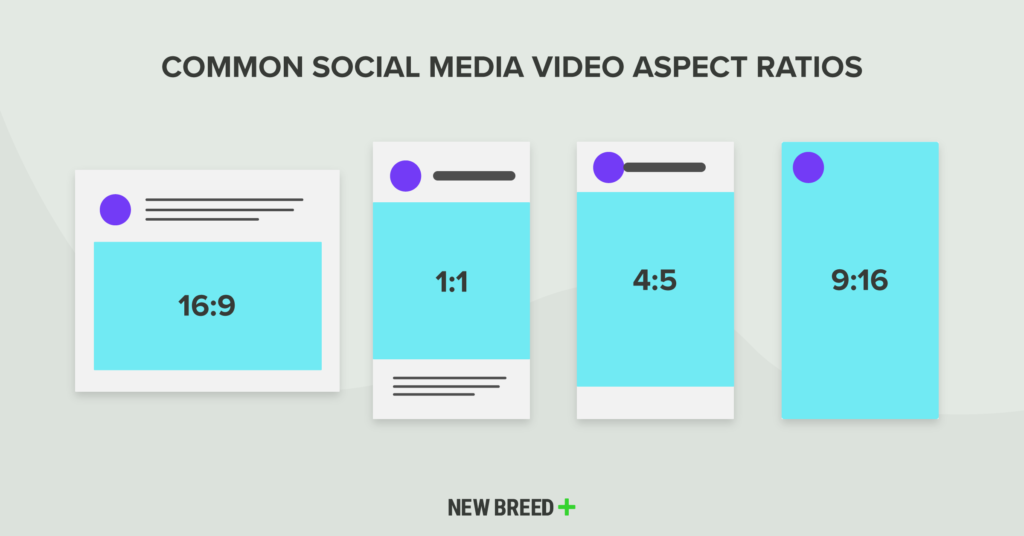
If you’re trying to grow your business via digital marketing, video is one of the most useful tools you can choose to use.
From targeted ads to social media posts to product how-to guides, videos can help you at every stage of your customer journey.
Creating effective content that supports your brand and engages your audience, however, requires a thoughtful approach.
Why is Optimizing Marketing Videos Important?
Video content in marketing collateral regularly outperforms text, audio, and static imagery. An Eyeview study, for example, found that adding a video to a landing page can boost conversions by as much as 86%.
And if you put the right optimization steps in place, your marketing videos can also help you rank on search engines, driving organic traffic and increasing your credibility in your market niche. So before you call “action,” consider these five tips for optimizing marketing videos.
1. Choose the Best-Fitting Aspect Ratio
Depending on where you’re planning to share your marketing video, choosing the right aspect ratio is crucial.
The most common aspect ratios for social media and video platforms are 16:9 (with a 1920x1080 pixel resolution) or 1:1. Vertical videos are increasingly popular on Snapchat and Instagram now, however, so you might need to edit your video according to their dimensions to maximize engagement.

Also, the devices your videos appear on should factor into your aspect ratio decision. If you’re targeting users on mobile devices across multiple channels, for example, a 1:1 video might be the best option if you’re only producing one piece of content.
2. Embed Captions
Mobile viewing habits are an essential consideration if you’re optimizing marketing videos. And the statistics say that captions are crucial if you want to reach your audience effectively.
A Verizon Media study of US consumers found that 92% of mobile users watch videos with the sound off, and 80% of consumers are more likely to watch an entire video when captions are available. The report also found that adding captions contributed to lifts in ad recall, ad memory quality, and brand linkage.
Tools like Rev make it easy to convert audio and/or video to text, either for captioning or transcription purposes.
3. Add an Engaging Thumbnail
“A picture is worth a thousand words” is a well-worn cliché, but when it comes to your marketing videos, your picture -- in this case, your thumbnail image -- might be worth a thousand clicks.
If you’re putting a marketing video on any major platform, you should have the option to upload a custom thumbnail that will appear before users click play.
There’s a science to creating thumbnails that you can dig into elsewhere, but here’s one notable fact -- Wordstream found that videos with custom thumbnails that featured people received a 30% higher play rate than those without.
4. End Screens
If your thumbnail is the hook that catches viewers’ attention, then the end screen is how you lure them in.
End screens usually add about 5-20 seconds to your video and direct viewers to take further action.
As Sinova explains, end screens set you up for any one of three calls-to-action:
- Promote your product, service, or website
- Ask viewers to like or subscribe to your channel
- Direct viewers to other videos, playlists, or channels
The end screen’s size, placement, and appearance can change depending on how it’s being viewed, so don’t rely exclusively on the end screen for your CTA. That said, they’re still a useful tool that can extend watch time and make it easier for prospects to continue moving through your customer journey.
5. Test and Track
Finally, if you’re really committed to optimizing marketing videos, you need two more systems in place -- one for testing your videos, and another for tracking conversions.
First, the only way to truly optimize your marketing videos is to test variants, see which performs better, and make incremental improvements. If you’re just creating and posting videos without considering what elements will have an impact on your audience, your marketing efforts will fizzle on the launch pad.
Second, if you can’t measure how your video performs, you can’t improve. Viewer data, attribution information, conversion rates, and other metrics will be the foundation of your choices as you improve your videos (and other marketing collateral) moving forward.
Final Thoughts on Optimizing Marketing Videos
We’ve only scratched the surface of what’s possible in your marketing videos. But if you pair these tips with quality creative assets and a savvy advertising strategy, you’ll reap the benefits of effective video marketing before you know it.
Interested in learning more? Contact GO VC for a consultation now!
